North America Air Defense System (part of 1)
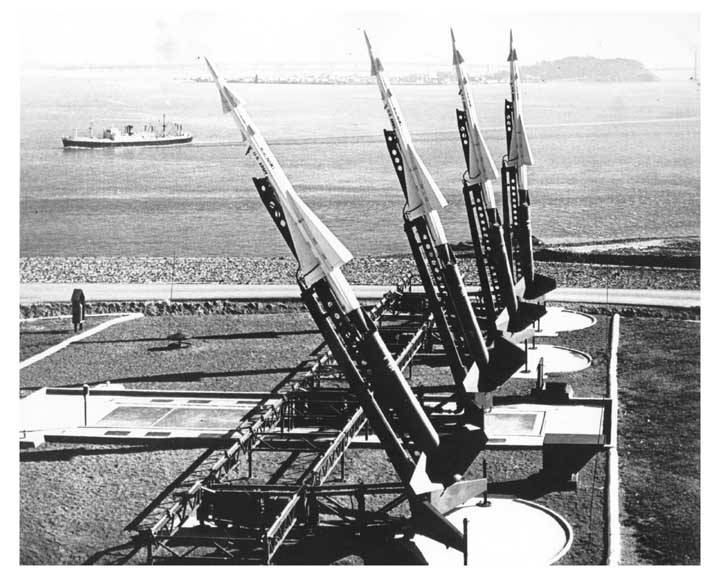
After the end of the Second World War, there were a significant number of medium and large caliber anti-aircraft guns, small-caliber anti-aircraft guns and 12,7-mm machine guns in the American armed forces. By 1947, about half of the 90 and 120-mm guns had been eliminated in the United States. The towed guns went to the storage bases, and the stationary anti-aircraft guns were suspended. Large-caliber anti-aircraft guns were preserved mainly on the coast, in areas of large ports and naval bases. However, the cuts also affected the Air Force, a significant part of the fighters built with piston engines built during the war years were scrapped or handed over to the allies. This was due to the fact that in the USSR until the middle of the 50-x there were no bombers capable of performing the combat mission on the continental part of North America and returning back. However, after the end of the American monopoly on the atomic bomb in 1949, it was impossible to exclude the possibility that in the event of a conflict between the USA and the USSR, the Soviet Tu-4 piston bombers would fly one-way missions.
Flywheel nuclear race spun up, 1 November 1952, the United States held a test of the first stationary thermonuclear explosive device. Through the 8 months in the USSR, the RDS-6c thermonuclear bomb was tested. Unlike the American experimental device with a height of two-story house - it was quite suitable for combat use of thermonuclear ammunition.
In the mid-50s, despite the Americans' multiple superiority in the number of carriers and the number of nuclear bombs, the likelihood that Soviet long-range bombers would reach the continental United States increased. In early 1955, in the combat units of the Far aviation M-4 bombers began to arrive (chief designer V.M. Myasischev), followed by: the improved 3M and Tu-95 (OKB A.N. Tupolev). These machines could already be guaranteed to reach the North American continent and, after delivering nuclear strikes, return back. Of course, the American leadership could not ignore the threat. As you know, the shortest route for airplanes flying from Eurasia to North America lies through the North Pole, and several defense lines have been created along this route.
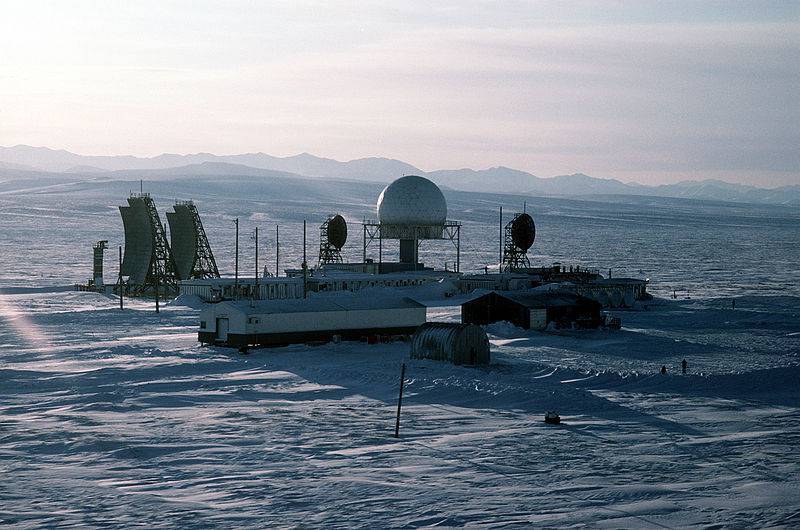
In Alaska, in Greenland and northeastern Canada, the most probable breakthrough routes for Soviet bombers built the so-called DEW line - a network of fixed radar stations interconnected by both air defense command points and cable lines and radio-relay stations. In several posts, in addition to radar detection of air targets, radar warning of a missile attack was subsequently built.
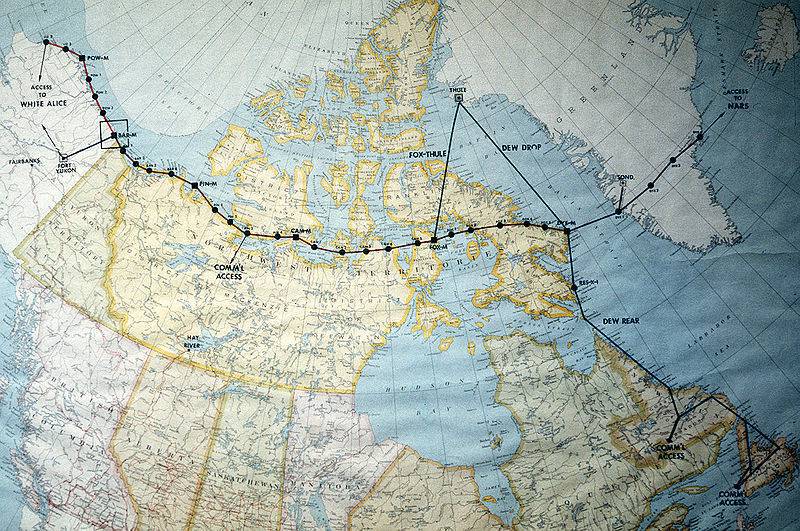
In order to counteract the Soviet bombers in the middle of the 50s in the United States, so-called “Barrier Forces” were formed to control the air situation along the western and eastern coasts of the United States. The coastal radar, the radar patrol ships, as well as the ZPG-2W and ZPG-3W aerostats tied into a single centralized network of alerts. The main purpose of the "Barrier Forces", located on the Atlantic and Pacific coasts of the United States, was to control the airspace with a view to early warning of approaching Soviet bomber. "Barrier forces" have become an addition to the radar stations of the DEW-line, located in Alaska, Canada and Greenland.
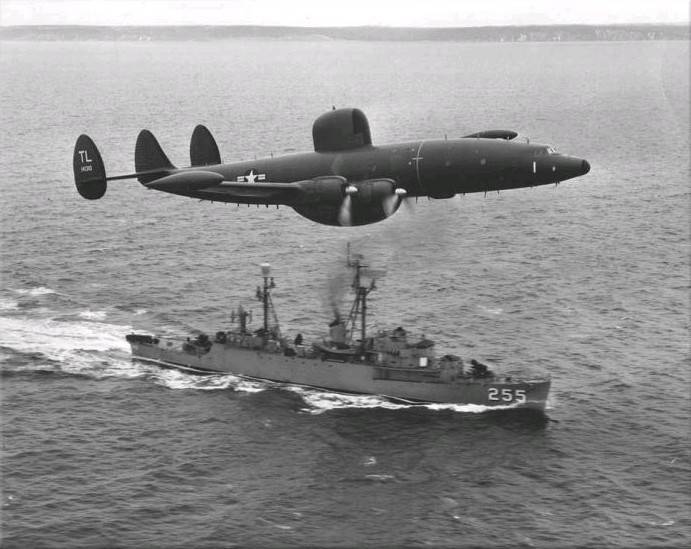
Ships of the radar patrol appeared in the years of the Second World War and were used by the US Navy mainly in the Pacific Ocean as part of large ship squadrons, with the goal of timely detection of Japanese aircraft. At the end of the 40-x and the beginning of the 50-x, for the conversion of the radar patrol into ships, the Liberty-type vehicles and the Goering-type destroyers of military construction were mainly used. Radar was installed on ships: AN / SPS-17, AN / SPS-26, AN / SPS-39, AN / SPS-42 with a detection range of 170-350 km. As a rule, these ships alone were on duty at a distance of up to several hundred kilometers from their shore and, in the opinion of the admirals, were highly vulnerable to sudden attacks of combat aircraft and submarines. Wanting to reduce the vulnerability of maritime long-range radar control, in the US 50-ies adopted the program Migraine. As part of this program, radars were installed on diesel submarines. It was believed that the submarines, finding the enemy on the screens of radars, after issuing an alert will be able to hide from the enemy under water.
In addition to the conversion of boats built in wartime, the US Navy received two special-design diesel-electric submarines: USS Sailfish (SSR-572) and USS Salmon (SSR-573). However, diesel-electric submarines for long-term duty did not have the necessary autonomy and, due to low speed, could not operate as part of high-speed task forces, and their operation was too expensive compared to surface vessels. In this regard, the construction of several special submarines was envisaged. The first atomic boat with a powerful radar of the review of the air situation was the USS Triton (SSRN-586).
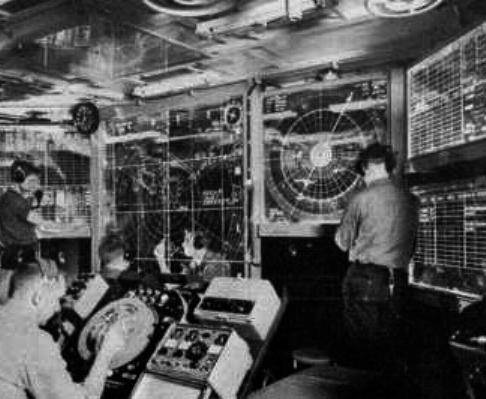
Tablet of the air situation and the radar console in the information command center of the Triton submarine
The AN / SPS-26 radar, installed on the Triton submarine, was able to detect a bomber-type target at a distance of 170 km. However, after the appearance of sufficiently advanced DRLO airplanes, the use of radar patrol submarines was decided to be abandoned.
In 1958, the operation of the E-1 Tracer DRLO aircraft began. This machine was built on the basis of the carrier cargo carrier C-1 Trader. The crew of the "Tracer" consisted of only two radar operators and two pilots. The functions of the command and control officer had to be performed by the second pilot. In addition, the plane did not have enough space for automated data transmission equipment.
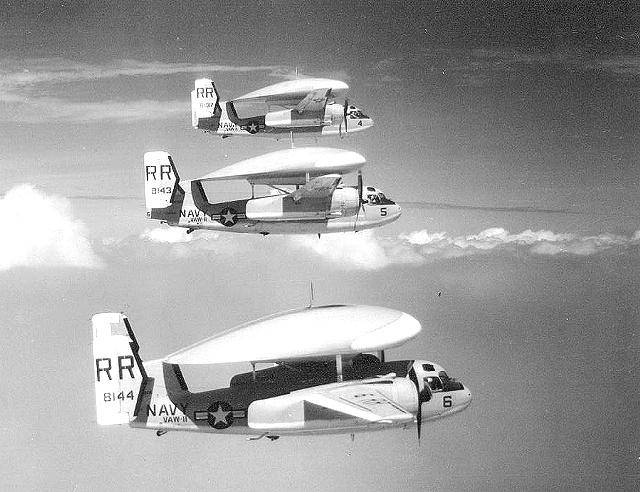
The detection range of air targets reached 180 km, which by the standards of the end of 50-x was not bad. However, during the operation, it turned out that the “Tracer” did not meet expectations, and the number of constructed ones was limited to 88 units. Information about the target was transmitted from the board of the Tracer to the interceptor pilot by voice over the radio, and not centralized through the mission control center and the air defense command post. For the most part, the “Tracer” was operated in deck aircraft, for the DRLO ground-based aircraft, the detection range and patrol time were unsatisfactory.
The radar patrols of the EC-121 Warning Star family had much better capabilities. The C-121C military transport aircraft, in turn created on the basis of the L-1049 Super Constellation passenger airliner, served as the basis for heavy DRLO airplanes with four piston engines.
The large internal volumes of the aircraft made it possible to knead the on-board radar stations of the lower and upper hemisphere review, as well as data transmission equipment and jobs for crews from 18 to 26 people. Depending on the modification, the following radars were installed on the “Warning Starach”: APS-20, APS-45, AN / APS-95, AN / APS-103. Late versions with advanced avionics received automatic data transmission to ground control points of the air defense system and the station of electronic reconnaissance and jamming AN / ALQ-124. The characteristics of the radar equipment were also consistently improved, for example, the AN / APS-103 radar installed on the EC-121Q modification could stably see targets against the background of the earth's surface. The detection range of a high-flying target of the Tu-4 type (B-29) in the absence of organized interference for the AN / APS-95 radar reached 400 km.
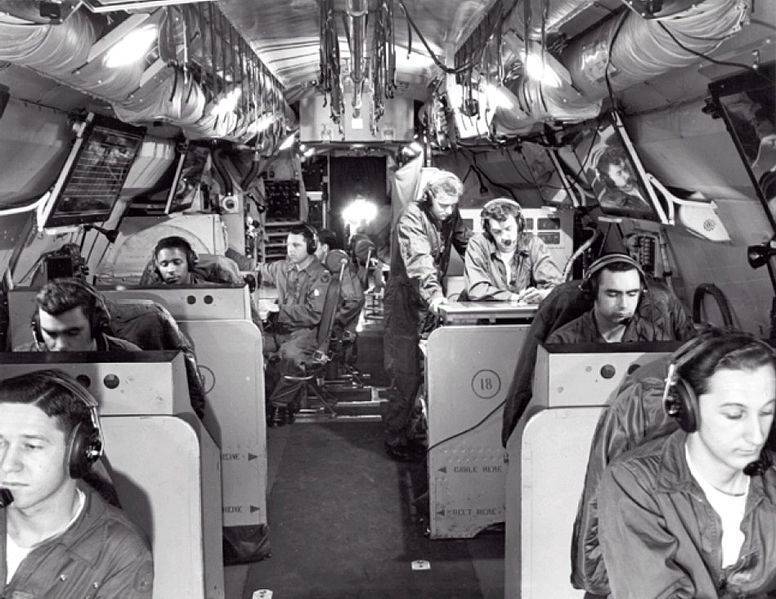
Even at the design stage, designers paid great attention to the convenience of work and the living conditions of the crew and operators of electronic systems, as well as ensuring the protection of personnel from microwave radiation. The patrol time was usually 12 hours at an altitude of 4000 to 7000 meters, but sometimes the duration of the flight reached 20 hours. Aircraft were used both in the Air Force and in navy. The EC-121 was built in series from 1953 to 1958. According to American data, during this time, 232 aircraft were handed over to the Air Force and Navy, their service continued until the end of the 70s.
In addition to the “Barrier Forces” and the DEW-line stations in the USA and Canada, ground-based radar stations were actively built in the 50s. Initially, it was intended to limit the construction of high-power stationary 24 radars to protect approaches to five strategic areas: in the northeast, in the Chicago-Detroit area, and on the west coast in the Seattle-San Francisco areas.
However, after it became aware of the nuclear testing in the USSR, the command of the US armed forces authorized the construction of 374 radar stations and 14 regional air defense command centers throughout the continental United States. All ground-based radars, most of the DRLO airplanes and radar patrol ships were linked to the SAGE (Semi Automatic Ground Environment) automated interceptor ignorance network - a system of semi-automatic coordination of interceptors by programming their auto pilots on the radio with computers on the ground. According to the scheme of building the American air defense system, information from radar stations about intruders of enemy aircraft was transmitted to the regional control center, which, in turn, controlled the interceptors. After the interceptors were lifted into the air, they were guided by signals from the SAGE system. The guidance system, which worked according to the centralized radar network, ensured the interception of the interceptor to the target area without pilot participation. In turn, the central command post of North American air defense was to coordinate the activities of the regional centers and provide general leadership.
The first American radar deployed in the United States were the AN / CPS-5 and AN / TPS-1B / 1D stations of the Second World War. Subsequently, the basis of the US-Canadian radar network made up the radar AN / FPS-3, AN / FPS-8 and AN / FPS-20. These stations could detect air targets at a distance longer than 200 km.
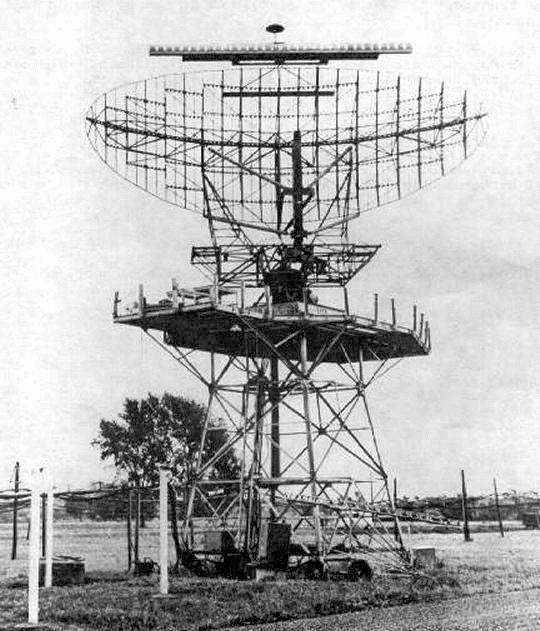
To provide detailed information about the air situation of regional air defense command centers, radar complexes were built, the main part of which were stationary radars of high power AN / FPS-24 and AN / FPS-26 with a peak power of more than 5 MW. Initially, the rotating antennas of the stations were mounted on reinforced concrete foundations openly, and later, to protect them from the effects of meteorological factors, they began to be covered with radio-transparent domes. When located at commanding altitudes, AN / FPS-24 and AN / FPS-26 stations could see high-altitude aerial targets at a distance of 300-400 km.
Radar AN / FPS-14 and AN / FPS-18 were deployed in areas where the probability of low-altitude bombers was high. To accurately determine the range and altitude of airborne targets, the radar and anti-aircraft missile systems used radio altimeters: AN / FPS-6, AN / MPS-14 and AN / FPS-90.
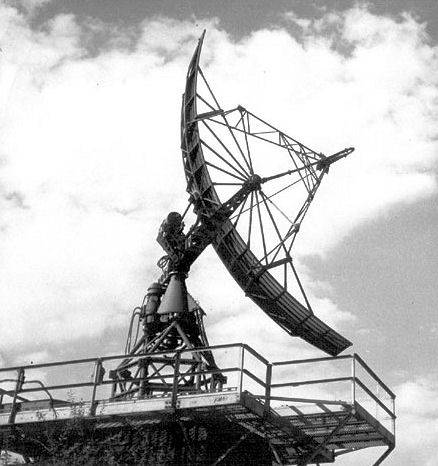
In the first half of the 50, air defense interceptors formed the basis of the air defense of the continental United States and Canada. For air defense throughout the vast territory of North America in 1951, there were about 900 fighters designed to intercept Soviet strategic bombers. In addition to highly specialized interceptors, numerous Air Force and Navy fighters could be involved in the execution of air defense tasks. But tactical and carrier-based aircraft did not have automated target guidance systems. Therefore, in addition to fighter aircraft, it was decided to develop and deploy anti-aircraft missile systems.
The first American fighter-interceptor, specifically designed to deal with strategic bombers, were the F-86D Saber, F-89D Scorpion and F-94 Starfire.
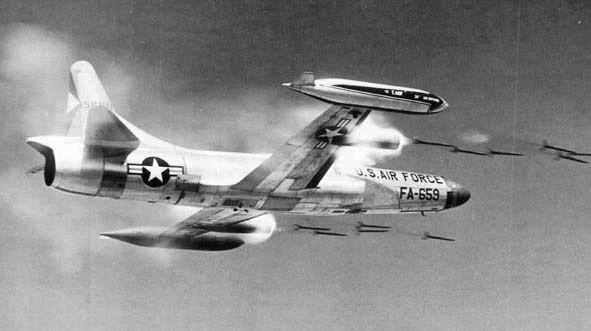
From the very beginning, for independent detection of bombers, American interceptors were equipped with airborne radars. Attacking enemy aircraft was originally intended 70-mm unguided air-to-air missiles Mk 4 FFAR. At the end of the 40s, it was believed that a massive NAR volley would destroy a bomber without entering the range of its defensive artillery installations. The views of the US military regarding the role of NAR in the fight against heavy bombers were greatly influenced by the successful use of Luftwaffe Me-262 fighter jets armed with 55-mm NAR R4M fighter. The unguided Mk 4 FFAR missiles were also part of the armament of the F-102 supersonic interceptors and the Canadian CF-100.
However, against bombers with turbo-jets and turboprop engines, which have a much higher flight speed compared to piston “Fortresses”, unguided missiles were not the most effective weapons. Although the 70-mm NAR bomber was deadly to him, the spread of 24 volley from unguided rockets at the range of the maximum fire of the 23-mm AM-23 guns was equal to the area of the football field.
In this regard, the US Air Force actively searched for alternative types of aircraft weapons. At the end of the 50-x, an unmanaged AIR-2A Genie air-to-air missile with a nuclear warhead of 1,25 kt and a launch range of up to 10 km was adopted. Despite the relatively short launch range of the Gene, the merit of this rocket was high reliability and insensitivity to interference.
In 1956, the rocket was first launched from the interceptor Northrop F-89 Scorpion, and at the beginning of 1957, it was put into service. Undermining the warhead was carried out by a remote fuse, triggered immediately after the completion of the rocket engine. The warhead explosion is guaranteed to destroy any aircraft within 500 radius. But even so, the defeat of high-speed, high-flying bombers with its help required the fighter-interceptor pilot to accurately calculate the launch.
In addition to the NAR, the AIM-1956 Falcon air combat missile with a launch range of 4-9 km entered the air defense fighter jets in the 11 year. Depending on the modification, the rocket had a semi-active radar or infrared guidance system. A total of about 40 000 missiles of the Falcon family were produced. Officially, this SD was decommissioned by the US Air Force in 1988, along with the F-106 interceptor.
The nuclear warhead version was designated AIM-26 Falcon. The development and adoption of this UR is connected with the fact that the US Air Force wanted to get a rocket with semi-active radar guidance capable of effectively hitting supersonic bombers during an attack on a head-on course. The AIM-26 design was almost identical to the AIM-4. The rocket with YABCh was slightly longer, much heavier and had almost twice the diameter of the hull. It used a more powerful engine capable of providing an effective launch range to 16 km. As the warhead used one of the most compact nuclear warheads: W-54 0,25 CT power, weighing only 23 kg.
In Canada, at the end of the 40-x - the beginning of the 50-x also worked on the creation of their own fighter-interceptors. The CF-100 Canuck interceptor was able to reach the stage of mass production and adoption. The aircraft entered service in the 1953 year, the Royal Canadian Air Force received more than 600 interceptors of this type. Like the American interceptors developed at that time, the APG-100 radar was used to detect air targets and aiming on the CF-40. The destruction of the enemy's bombers was to be carried out by two batteries placed on the wingtips, in which there was 58 70-mm HAP.
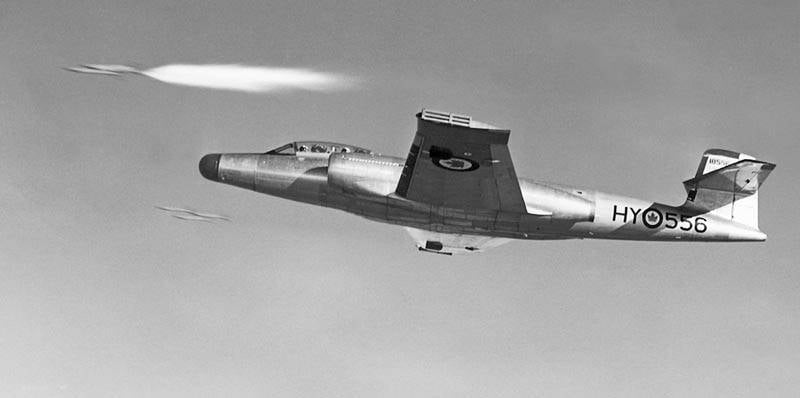
In the 60 of the first line of the Canadian Air Force, CF-100 replaced the US-made supersonic F-101B Voodoo, but the operation of the CF-100 as a locking interceptor continued until the middle of the 70's.
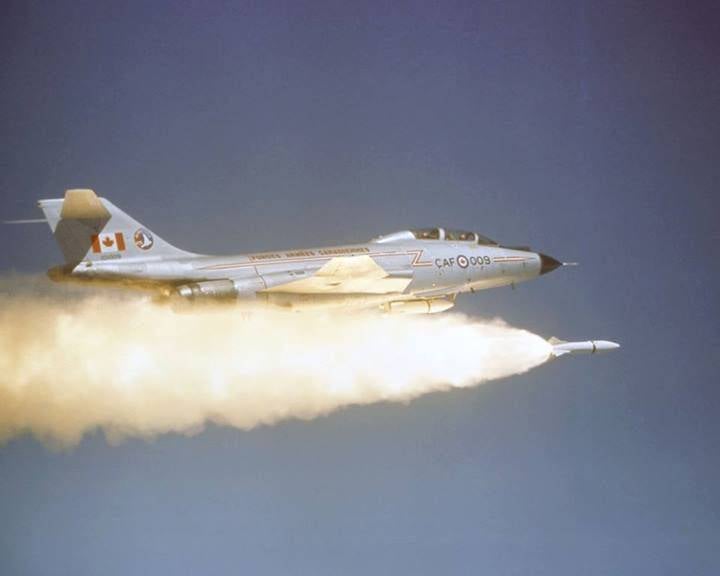
Training AHR AIR-2A Genie with a conventional warhead from the Canadian interceptor F-101B
As part of the Canadian weapons, “Voodoo” had missiles with the nuclear warhead AIR-2A, which went against the nuclear-free status of Canada. By intergovernmental agreement between the United States and Canada, missiles with nuclear warheads were under the control of the American military. However, it is not clear how it was possible to control the interceptor fighter pilot in flight, with a missile suspended from his plane with a nuclear warhead.
In addition to interceptor fighters and their weapons, substantial funds in the United States were spent on the development of anti-aircraft missiles. In 1953, the first MIM-3 SAMs began to deploy Nike-Ajax around important American administrative and industrial centers and defense facilities. Sometimes the air defense missile systems were located in the 90 and 120-mm anti-aircraft guns positions.
In the Nike-Ajax complex, "liquid" missiles with a solid-fuel accelerator were used. Targeting occurred with the help of radio commands. A unique feature of the Nike-Ajax anti-aircraft missile was the presence of three high-explosive fragmentation warheads. The first, weighing 5,44 kg, was placed in the nasal section, the second - 81,2 kg - in the middle, and the third - 55,3 kg - in the tail. It was assumed that this would increase the probability of hitting the target, due to a longer cloud of fragments. The Nike-Ajax slope range was about 48 kilometers. The rocket could hit the target at a height of just over 21000 meters, while moving at a speed of 2,3M.
Each Nike-Ajax battery consisted of two parts: the central control station, where the personnel bunkers were located, the detection and guidance radar, counter-decisive equipment, and the technical launch position, where the launchers, depots, tanks with fuel and oxidizing agent. The technical position, as a rule, had 2-3 missile storages and 4-6 launchers. However, near major cities, naval bases and strategic aviation airfields, positions from 16 to 24 launchers were sometimes constructed.
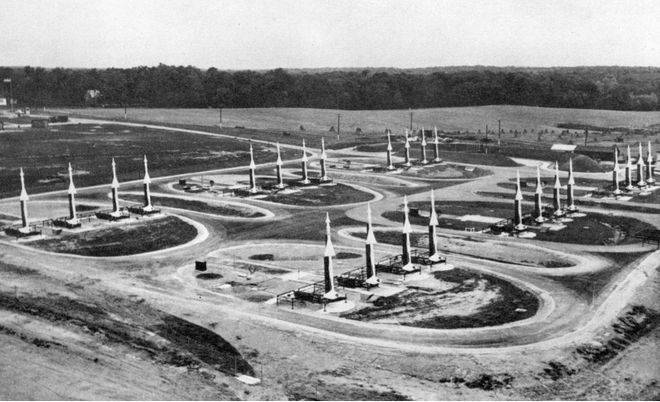
At the first stage of development, the Nike-Ajax positions were not strengthened in engineering. Subsequently, with the advent of the need to protect the complexes from the damaging factors of a nuclear explosion, underground rocket storage facilities were developed. Each in-depth bunker stored 12 missiles fed horizontally through a drop-down roof with hydraulic drives. Raised to the surface of the rocket on the rail car was transported to a horizontally lying launcher. After loading the missile, the PU was set at an angle of 85 degrees.
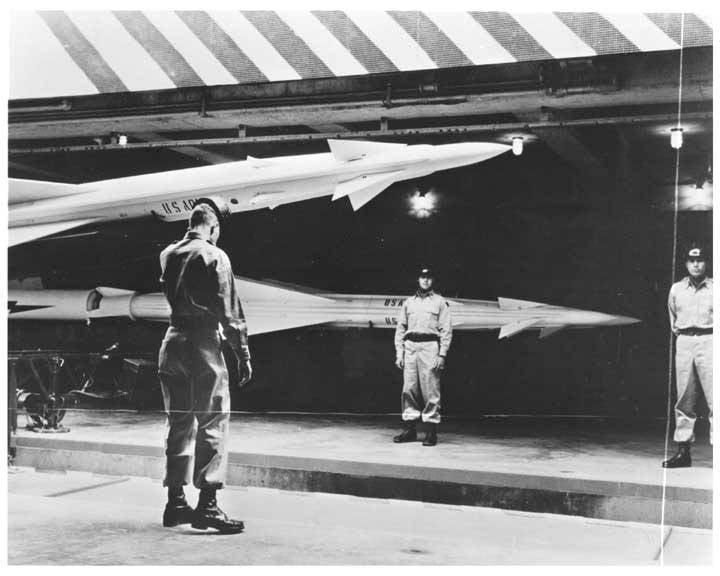
Despite the huge scale of deployment (more than 1953 anti-aircraft batteries were deployed in the US from 1958 to 100 year), the Nike-Ajax MIM-3 SAM system had a number of significant drawbacks. The complex was stationary and could not relocate within a reasonable time. Initially, data were not exchanged between individual anti-aircraft missile batteries, as a result of which several batteries could fire at the same target, but ignore others. This deficiency was subsequently corrected by introducing Martin’s AN / FSG-1 Missile Master system, which allowed for the exchange of information between computing devices of individual batteries and coordinating the distribution of targets among several batteries.
Major problems were caused by the operation and maintenance of "liquid" rockets due to the use of explosive and toxic components of fuel and oxidizer. This led to the acceleration of work on the rocket on solid fuel and was one of the reasons for the decommissioning of the Nike-Ajax air defense system in the second half of the 60-s. Despite the short life span, Bell Telephone Laboratories and Douglas Aircraft managed to deliver more than 1952 1958 anti-aircraft missiles from 13 to 000.
In place of the MIM-3 Nike-Ajakh air defense system in 1958, the MIM-14 Nike-Hercules complex was adopted. In the second half of 50, American chemists managed to create a solid fuel recipe suitable for use in long-range anti-aircraft missiles. At that time it was a very big achievement, in the USSR it was only possible to repeat this in the 70-s in the C-300P anti-aircraft missile system.
Compared to Nike-Ajax, the new anti-aircraft complex had almost three times the range of aerial targets (130 instead of 48 km) and height (30 instead of 21 km), which was achieved by using new, larger and heavier missiles and powerful radar stations . However, the schematic diagram of the construction and combat work of the complex remained the same. Unlike the first Soviet stationary S-25 air defense system of Moscow, the American Nike-Ajax and Nike-Hercules SAMs were single-channel, which significantly limited their ability to repel a massive raid. At the same time, the single-channel Soviet air defense system C-75 had the ability to change positions, which increased survival. But it was possible to surpass the Nike-Hercules in range only in a virtually stationary C-200 air defense system with a “liquid” missile.
Initially, the detection and targeting system of the Nike-Hercules system, operating in the continuous-emission mode, was almost similar to the Nike-Ajax system. The stationary system had the means of identifying the nationality of aviation and a means of targeting.
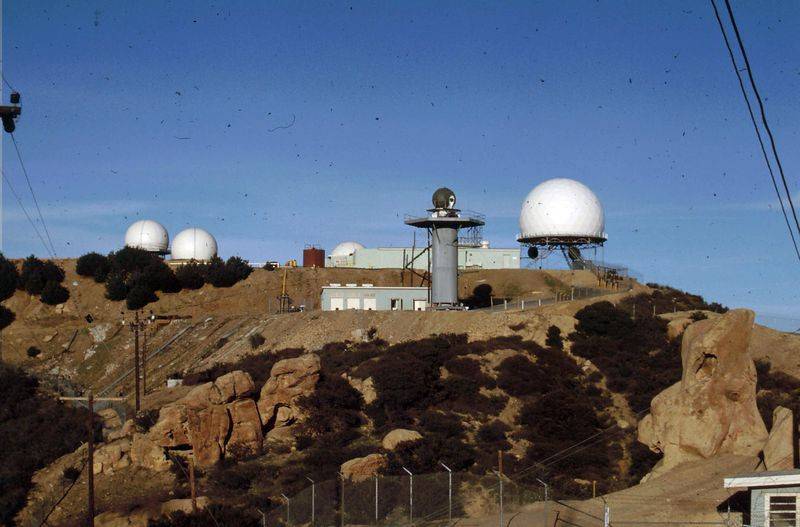
Stationary version of the radar detection and guidance SAMs MIM-14 Nike-Hercules
In the stationary version, the anti-aircraft complexes were combined into batteries and divisions. The battery had all the radar equipment and two launch pads with four launchers. Each division includes six batteries. Anti-aircraft batteries were usually placed around the protected object at a distance of 50-60 km.
However, the military soon ceased to organize a purely stationary version of the Nike-Hercules complex. In 1960, the Improved Hercules version appeared - "Advanced Hercules". Albeit with certain restrictions, this option could already be deployed in a new position within a reasonable time. In addition to mobility, the upgraded version received a new radar detection and upgraded target tracking radars, with increased immunity to interference and the ability to track high-speed targets. In addition, a radio range finder was introduced into the complex, which carried out constant determination of the distance to the target and issued additional corrections for the calculating device.
The upgraded mobile radar complex ZRK MIM-14 Nike-Hercules
Progress in the miniaturization of atomic charges made it possible to equip the missile with a nuclear warhead. On the MIM-14 SAMs Nike-Hercules installed YABCh with power from 2 to 40 CT. An air explosion of a nuclear warhead could destroy an aircraft within a radius of several hundred meters from the epicenter, which made it possible to effectively hit even complex, small-sized targets like supersonic cruise missiles. Most of the Nike-Hercules anti-aircraft missiles deployed in the United States were equipped with nuclear warheads.
Nike-Hercules was the first anti-aircraft missile system with anti-missile capabilities, it could potentially intercept single ballistic missile warheads. In 1960, the MIM-14 Nike-Hercules nuclear warhead with the nuclear warhead succeeded in carrying out the first successful interception of a ballistic missile, the MGM-5 Corporal. However, the anti-missile capabilities of the Nike-Hercules system were assessed as low. According to calculations, the destruction of one combat unit of ICBMs required at least 10 missiles from a YABCh. Immediately after the adoption of the Nike-Hercules airborne complex, the development of its Nike-Zeus anti-missile version began (in more detail here: US missile defense system). Also, the MIM-14 Nike-Hercules SAMs had the ability to conduct nuclear strikes on ground targets, with previously known coordinates.
A total of Nike-Hercules 60 batteries were deployed in the US by the middle of the 145's (the 35 was rebuilt and the 110 was refitted from Nike-Ajax batteries). This allowed for sufficiently effective protection of the main industrial areas. But, as the Soviet ICBMs began to pose a major threat to objects in the United States, the number of Nike-Hercules missiles deployed in the United States began to decline. By 1974, all of the Nike-Hercules SAMs, with the exception of batteries in Florida and Alaska, were removed from combat duty. For the most part, the stationary complexes of early release were disposed of, and the mobile versions, after carrying out restoration work, were transferred to overseas American bases or transferred to the allies.
Unlike the Soviet Union, surrounded by numerous US and NATO bases, the territory of North America was not threatened by thousands of tactical and strategic aviation combat aircraft based on advanced airfields in close proximity to the borders. The appearance in the USSR in significant quantities of intercontinental ballistic missiles made senseless the deployment of numerous radar stations, anti-aircraft systems and the construction of thousands of interceptors. In this case, it can be stated that the billions of dollars spent on protection from Soviet long-range bombers were eventually thrown to the wind.
To be continued ...
Based on:
https://fas.org/nuke/guide/usa/airdef/searching_the_skies.htm
http://www.boeing.com/history/products/mb-1-air-2-genie-missile.page
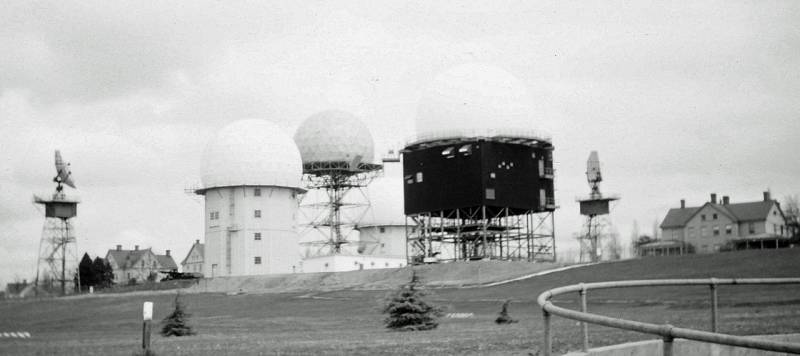
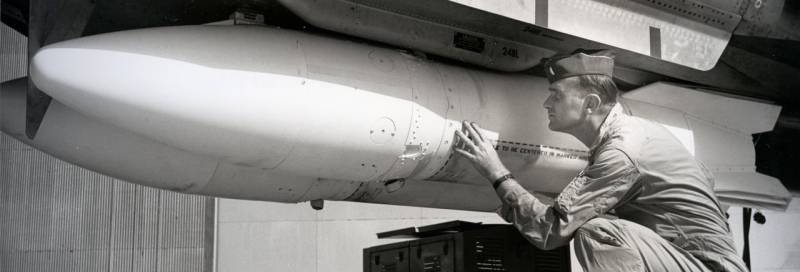
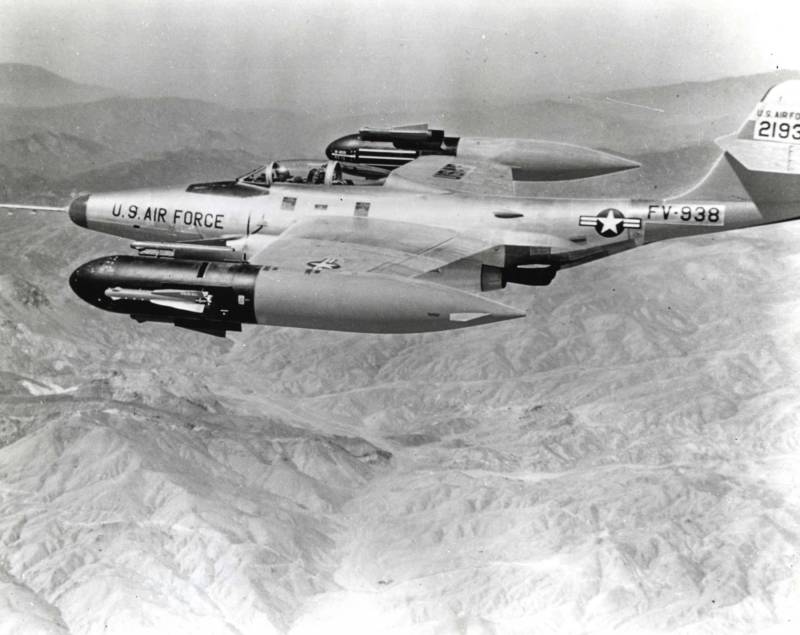
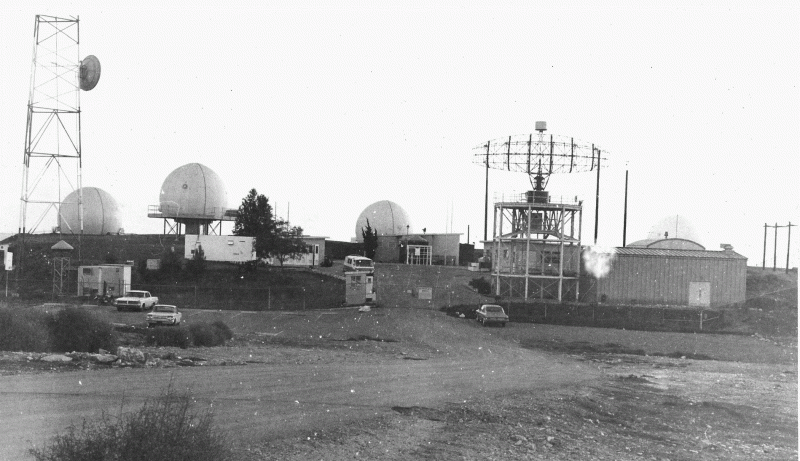
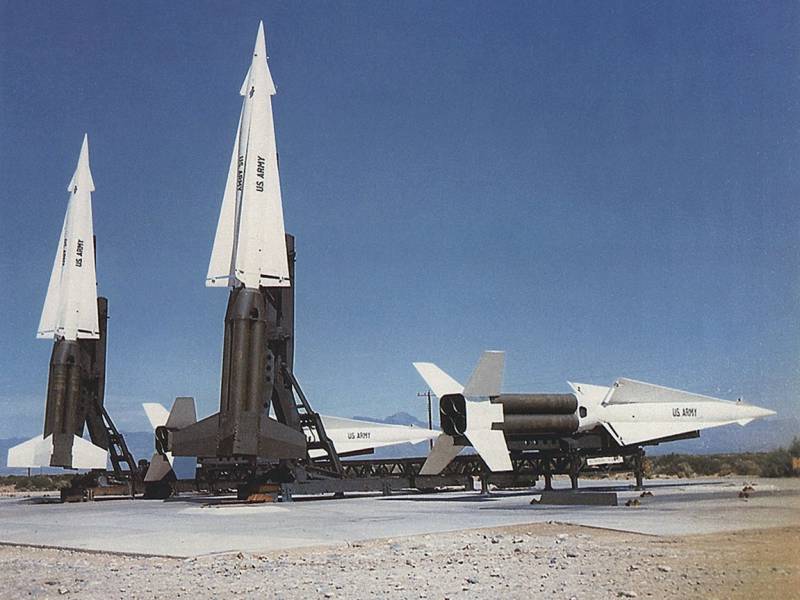
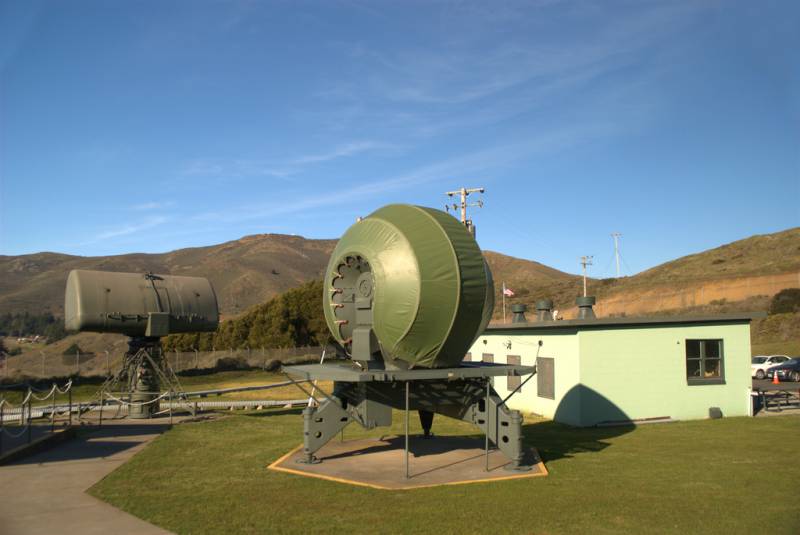
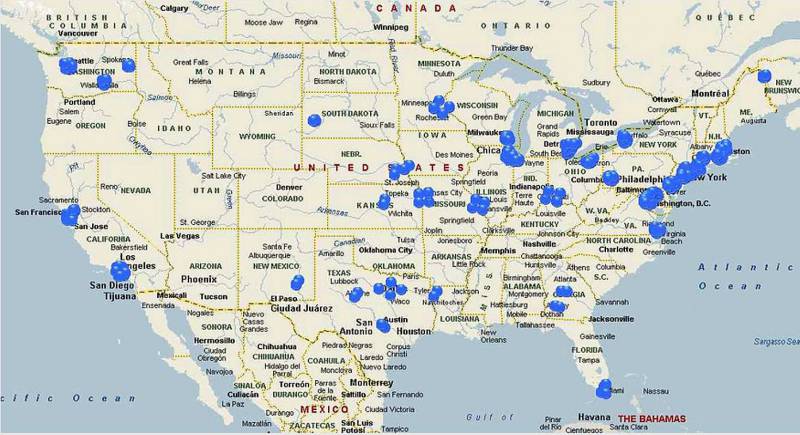
Information